



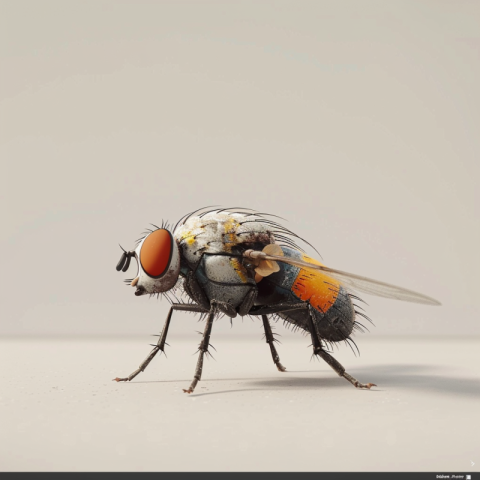
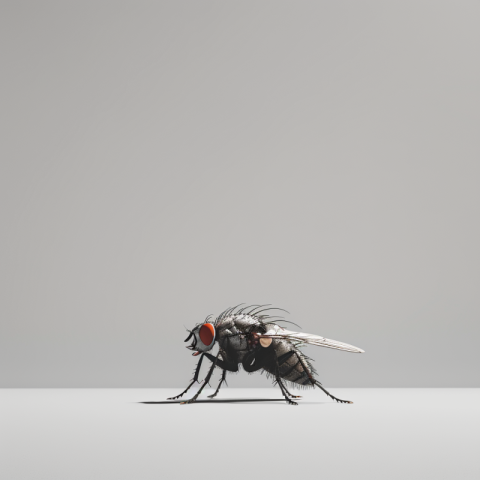
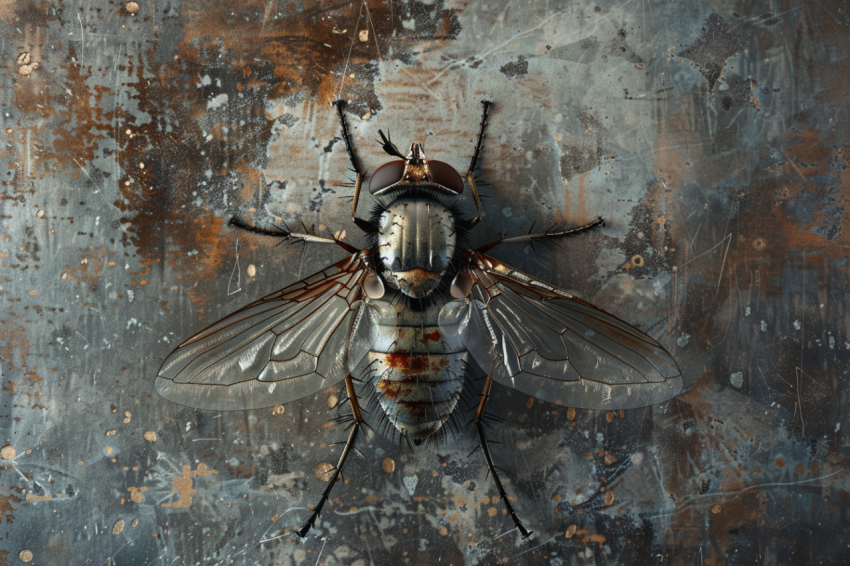
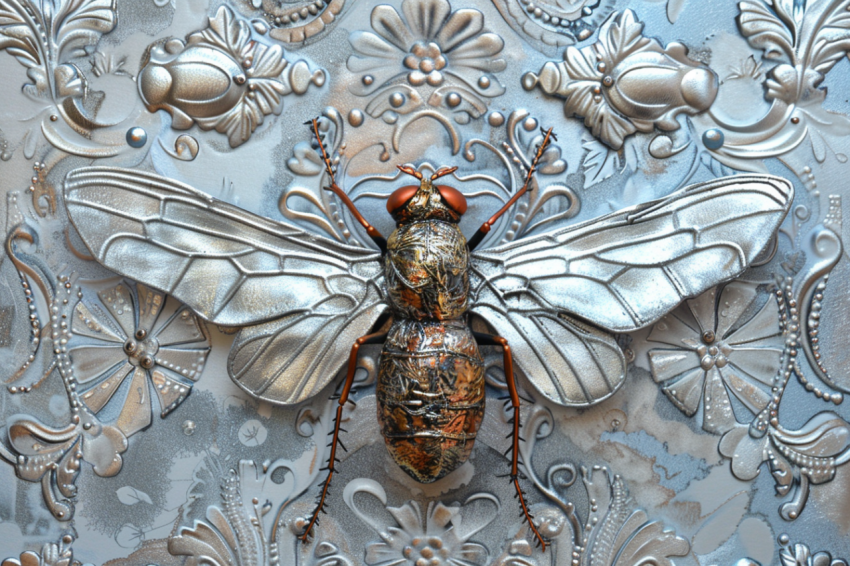
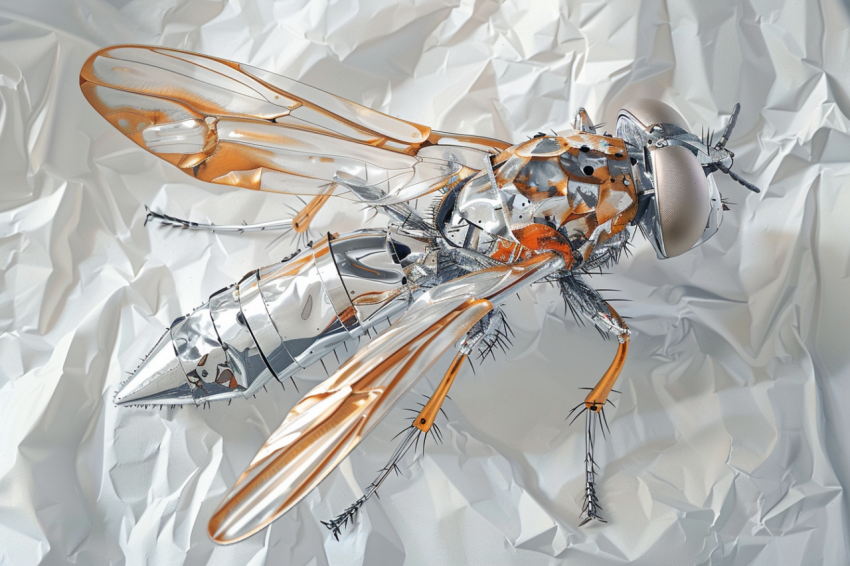
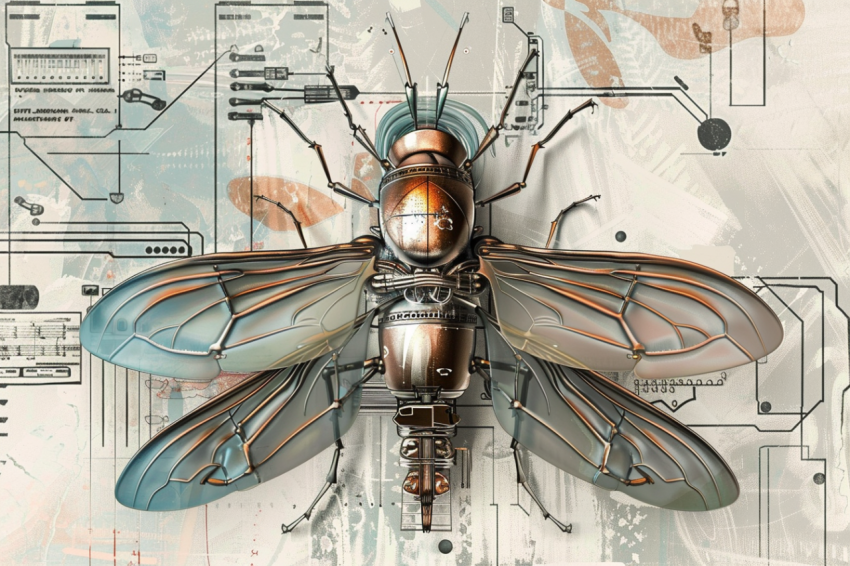
Flies: More Than Just Pests - Diversity, Biology, and Ecological Roles
Flies are a vast and diverse group of insects belonging to the order Diptera, which means "two wings." Unlike most other winged insects, flies have only one pair of functional wings for flight; the hind wings are reduced to small, club-shaped structures called halteres, which act as gyroscopes and provide balance during flight. Flies are found worldwide and occupy nearly every imaginable ecological niche. While some are notorious pests, many play vital roles in pollination, decomposition, and other ecosystem processes.
1. Fly Biology and Anatomy:
- Two Wings: The defining characteristic of flies is their single pair of membranous wings.
- Halteres: These small, knob-like structures are modified hind wings that help flies maintain stability and perform aerial maneuvers.
- Compound Eyes: Flies have large compound eyes that provide a wide field of vision.
- Mouthparts: Fly mouthparts are adapted for sucking or piercing, depending on their diet.
- Larvae (Maggots): Fly larvae, often called maggots, are typically legless and worm-like, with a reduced head.
2. Fly Life Cycle (Complete Metamorphosis):
Flies undergo complete metamorphosis, passing through four distinct stages:
- Egg: Female flies lay eggs, often in large numbers, in a variety of substrates depending on the species (e.g., decaying matter, food, water).
- Larva (Maggot): The larval stage is a period of feeding and growth. Maggots are specialized for consuming and breaking down organic material.
- Pupa: The larva transforms into a pupa, a resting stage during which metamorphosis occurs. The pupa is often enclosed in a hardened case called a puparium.
- Adult: The adult fly emerges from the puparium with fully developed wings and reproductive organs.
3. Diversity of Fly Species:
The order Diptera is incredibly diverse, with over 125,000 described species. Some notable fly families include:
- House Flies (Muscidae): Common pests associated with humans and livestock.
- Fruit Flies (Drosophilidae): Small flies often found around ripe or decaying fruit; Drosophila melanogaster is a crucial model organism in genetics research.
- Blow Flies (Calliphoridae): Often metallic green or blue, these flies are important decomposers and are used in forensic entomology.
- Mosquitoes (Culicidae): Known for their blood-feeding habits and their role as vectors of diseases.
- Crane Flies (Tipulidae): Large, long-legged flies that are often mistaken for mosquitoes but do not bite.
- Hover Flies (Syrphidae): Important pollinators, many of which mimic bees or wasps.
- Tachinid Flies (Tachinidae): Parasitoids of other insects, playing a role in biological control.
4. Fly Behavior:
- Feeding: Flies exhibit diverse feeding strategies. Some are nectar feeders, others are predators, some are parasites or parasitoids, and many feed on decaying organic matter (saprophages).
- Mating: Fly mating behaviors vary widely, with some species engaging in elaborate courtship displays or forming mating swarms.
- Flight: Flies are agile fliers, and their halteres provide exceptional control and maneuverability.
5. Fly Diet and Feeding: Flies can feed on a wide variety of substances. They use their mouthparts, which can be adapted for sponging, piercing, or sucking, to consume liquids or semi-liquid materials. The larvae of many fly species are important decomposers.
6. Ecological Importance of Flies:
Flies play several vital roles in ecosystems:
- Decomposition: Fly larvae are crucial decomposers, breaking down dead plants and animals, and recycling nutrients.
- Pollination: Many flies, especially hoverflies, are important pollinators of various plants.
- Food Source: Flies are a food source for birds, spiders, reptiles, amphibians, and other animals.
- Biological Control: Some flies, like tachinid flies, are parasitoids of other insects and can help control pest populations.
- Forensic Entomology: Certain fly species, like blow flies, are attracted to মৃতদেহ (dead bodies) and are used in forensic investigations to estimate the time of death.
- Scientific Research: Fruit flies, particularly Drosophila melanogaster, are widely used as model organisms in genetics, developmental biology, and other fields of research.
7. Flies and Humans:
- Pests: Some fly species are significant pests of humans and livestock, transmitting diseases and contaminating food. House flies, for example, can spread bacteria like Salmonella and E. coli.
- Disease Vectors: Certain flies, such as mosquitoes and tsetse flies, are vectors of serious diseases like malaria, dengue fever, and sleeping sickness.
- Agricultural Pests: Some flies damage crops by feeding on plant tissues or laying their eggs in fruits.
8. Fly Control:
Managing fly populations often involves:
- Sanitation: Eliminating breeding sites by removing garbage, animal waste, and other organic matter.
- Exclusion: Using screens and other barriers to prevent flies from entering buildings.
- Traps: Using fly traps to capture and kill adult flies.
- Insecticides: Applying insecticides to kill larvae or adults, although this should be done cautiously due to potential environmental and health impacts.
- Biological Control: Utilizing natural enemies of flies, such as parasitoid wasps or predatory beetles.
9. Studying Flies (Dipterology):
The scientific study of flies is a branch of entomology known as dipterology. Scientists who study flies are called dipterists. Research on flies contributes to our understanding of ecology, evolution, genetics, disease transmission, and pest management.
Conclusion:
Flies are a remarkably diverse and ecologically important group of insects. While some species are pests, many others play vital roles in decomposition, pollination, and other ecosystem processes. Understanding the biology and behavior of flies is crucial for managing pest populations, preventing disease transmission, and appreciating the intricate workings of the natural world.
Fly species, house fly, fruit fly, blow fly, mosquito, crane fly, hover fly, tachinid fly, Diptera, two wings, halteres, maggots, complete metamorphosis, fly life cycle, fly larvae, pupa, puparium, decomposition, pollination, food source, biological control, forensic entomology, disease vector, pest, sanitation, fly traps, insecticides, dipterology, Drosophila melanogaster, model organism, Muscidae, Drosophilidae, Calliphoridae, Culicidae, Tipulidae, Syrphidae, Tachinidae, pest control, maggot therapy, myiasis, green bottle fly, blue bottle fly, flesh fly.

